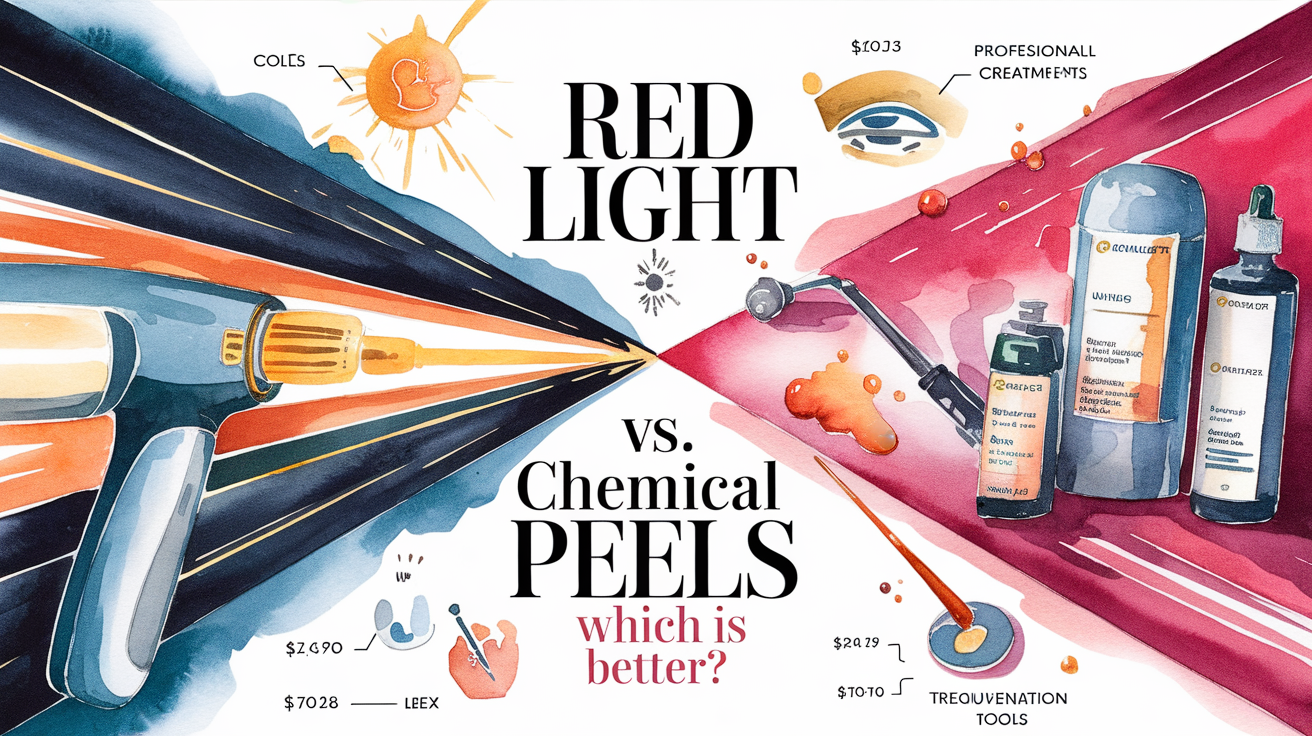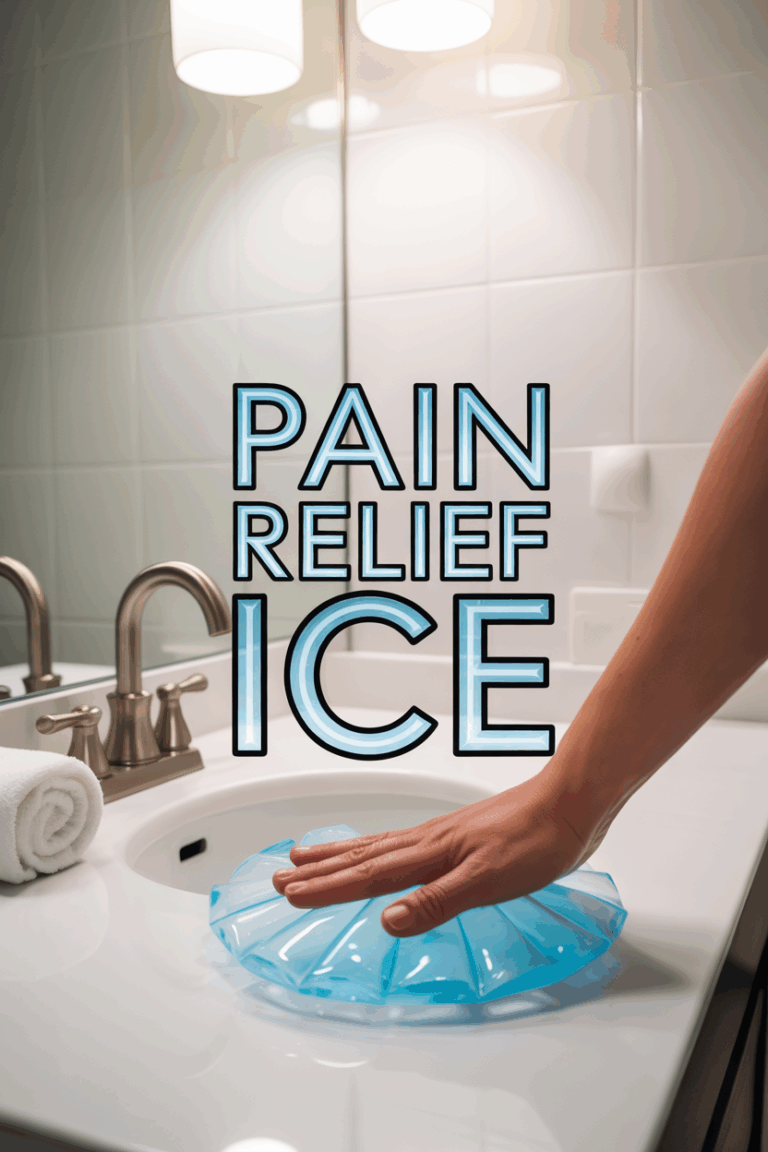Red Light Therapy vs. Chemical Peels: Which Is Better?

Red Light Therapy vs. Chemical Peels: Which Path Is for You?
You’re exploring ways to give your skin a little extra love, and that’s a wonderful step in your self-care journey. You’ve likely encountered two popular options: red light therapy and chemical peels.
They both share the goal of helping your skin look its best, but they take completely different routes to get there.
Let’s break down the core difference right away. Red light therapy works from the inside out. It’s a cheerleader for your cells, encouraging them to perform their best without disrupting the surface.
On the other hand, chemical peels work from the outside in. They remove the surface to kickstart a healing response, revealing fresh, new skin underneath. One is a gentle supporter, while the other is an effective renovator.
Understanding this fundamental difference will help you figure out which path feels right for your unique skin and wellness goals.
The Gentle Glow: How Red Light Therapy Works From Within
Imagine giving your skin cells a gentle, energizing pep talk with light. That’s the essence of red light therapy.
It uses specific, clinically-supported wavelengths of red and near-infrared light that your skin happily absorbs.
This light encourages your cells’ tiny power plants, the mitochondria, to get to work and boost their energy production. It’s like a battery charge for your skin at a cellular level.
This little energy surge helps your skin do what it does best: heal, build fresh collagen, and improve blood flow.
It also helps calm down redness and inflammation. It’s all about supporting your skin from within, no drama or harshness involved.
How a Chemical Peel Gives Your Skin a Fresh Start
A chemical peel is like hitting the refresh button on your skin’s surface. It uses a specially formulated solution to gently remove the top layers of tired, damaged skin cells.
Think of it as a controlled “out with the old, in with the new.”
This process sends a signal to your body to begin its natural healing cycle. This prompts it to grow a new layer of skin that’s often smoother, brighter, and more even-toned.
Peels come in different strengths to suit various needs. You can choose from a light “lunchtime” refresh to a much deeper renewal, depending on your desired outcome and tolerance for downtime.
The Treatment Experience: A Tale of Two Sensations
A red light therapy session is a moment of pure zen. You’ll likely sit or lie down comfortably in front of a panel of lights for about 10 to 20 minutes.
Most people just feel a gentle, soothing warmth on their skin. There’s no stinging or discomfort—just you, some quiet time, and a warm glow.
It’s a perfect, peaceful pause in your day.
A chemical peel, on the other hand, is a more active experience. After your skin is prepped, a chemical solution is applied.
You can expect to feel a tingly, itchy, or stinging sensation while the solution is doing its job. The intensity of this feeling depends on the peel’s strength.
After a set amount of time, the solution is neutralized, and the tingling subsides, marking the start of your skin’s renewal.
Recovery and Downtime: Bouncing Back vs. The Healing Journey
One of the biggest draws of red light therapy is its lack of downtime. After a session, your skin might look a little pink, as if it’s blushing from the attention, but that usually fades within an hour or so.
You can hop right back into your daily routine, makeup and all, without missing a beat.
The healing journey after a chemical peel is a key part of the process itself. For any peel, your skin will be extra sensitive and appear pink or red, much like a sunburn.
- Light Peels: Expect some dryness and light flaking for a few days.
- Medium to Deep Peels: Prepare for a more visible renewal! Your skin will likely darken before it begins to noticeably peel for a week or more.
Following your aftercare plan is crucial, especially when it comes to sunscreen. Your delicate new skin needs to be protected from the sun as it heals.
When to Choose the Glow: Who Benefits from Red Light Therapy?
Because it’s all about boosting skin health from the inside, red light therapy is a wonderful choice for concerns that need gentle, consistent support for long-term improvement.
It’s a fantastic go-to for a variety of wellness-focused goals.
Consider red light therapy for:
- Softening the look of fine lines and wrinkles over time
- Calming down general redness and irritation
- Soothing mild acne by addressing inflammation and bacteria
- Boosting circulation for that healthy, lit-from-within glow
It’s an ideal proactive and restorative treatment that fits seamlessly into a holistic self-care routine.
When a Peel Is the Answer: Best Uses for Skin Resurfacing
Since chemical peels are designed for resurfacing, they’re fantastic for more visible, on-the-surface issues that you want to address more directly.
A peel might be your ideal pick if your goals are focused on texture and tone.
This is where a chemical peel really shines:
- Smoothing out rough or uneven skin texture
- Fading sun spots, dark spots, and other discoloration
- Minimizing the appearance of shallow acne scars
- Brightening up a dull, tired-looking complexion
It provides a more immediate “reset” for your skin’s surface, revealing the healthier skin waiting beneath.
Intensity Levels: A Gentle Hug vs. a Deep Clean
The intensity of these two treatments is fundamentally different. Red light therapy is completely non-invasive. It gives your skin a hug of light without ever breaking or burning the surface.
There is no damage involved; it’s purely supportive and regenerative.
A chemical peel, depending on its strength, is considered minimally invasive to invasive.
It works by creating a tiny, controlled injury to the skin. This controlled process is what triggers that beautiful regenerative healing response, but it is an inherently more intense approach.
At-Home Self-Care vs. Professional Power
You can bring the benefits of both treatments into your home. At-home red light therapy devices are great for daily maintenance and consistent, gentle care, though they are less powerful than professional-grade equipment.
Similarly, at-home peels with ingredients like glycolic or salicylic acid can offer light, regular exfoliation.
For more significant results, professional treatments are the way to go.
A session with a trained expert packs a more powerful punch, whether it’s with a clinical-strength light panel or a medium-to-deep chemical peel that must be administered by a professional.
Your choice depends on your goals, budget, and desired level of intensity.
Can You Combine Red Light Therapy and Chemical Peels?
Yes, these two treatments can work together beautifully as part of a comprehensive skincare plan. The key is timing and professional guidance.
They should not be performed on the same day.
Many people use red light therapy to help soothe their skin and support healing in the weeks *after* a chemical peel has fully healed. The anti-inflammatory properties of red light can be a wonderful complement to the renewal process initiated by a peel.
The most important step is to chat with a dermatologist or esthetician first. They can help you create a safe and effective plan so your treatments work in harmony.
Which Skincare Path Is Right for You?
Ultimately, this decision is all about your skin, your goals, and your lifestyle. Listen to what your intuition and your skin are telling you.
Here’s a simple way to decide:
- If you’re looking for a gentle, no-downtime routine that supports your skin’s health from the inside for the long haul, red light therapy could be your new best friend.
- If you want to tackle more noticeable surface issues like texture or sun damage and you’re okay with planning for some healing time, a chemical peel might be just the ticket.
Choosing based on your goals and downtime tolerance is key. Now that you know how they work, you can make a choice that feels right for you.
Whether you choose the cellular support of light or the surface renewal of a peel, you’re taking a wonderful step in your self-care practice.






